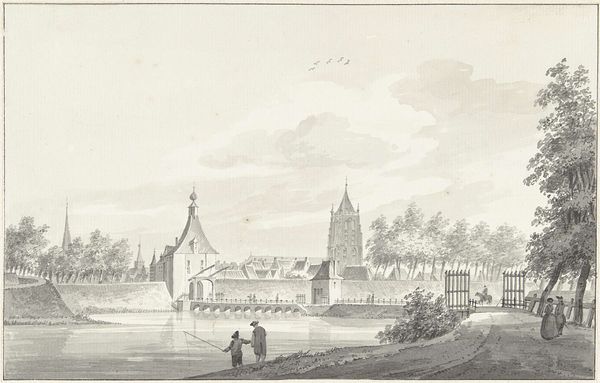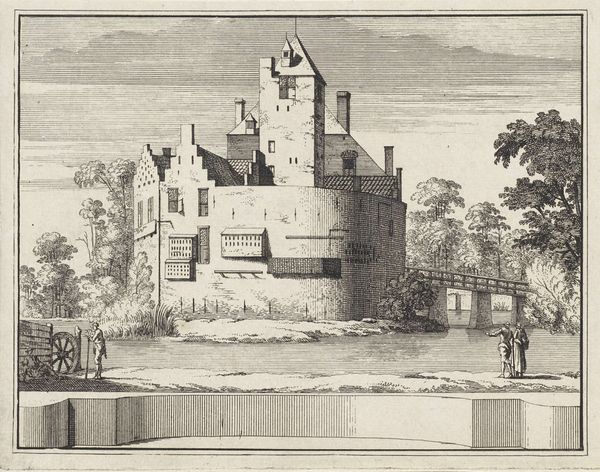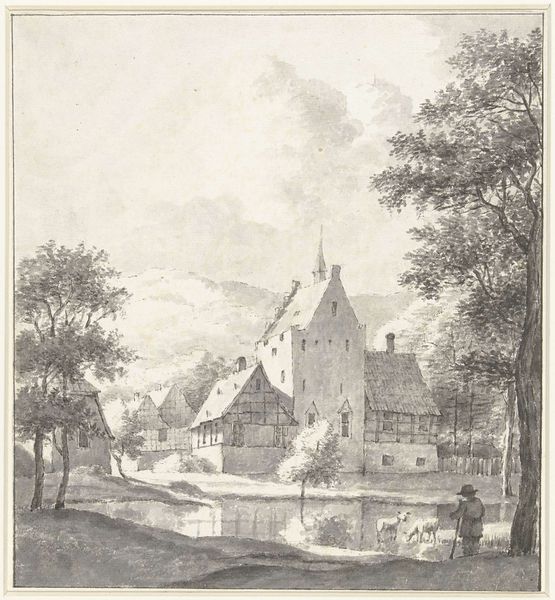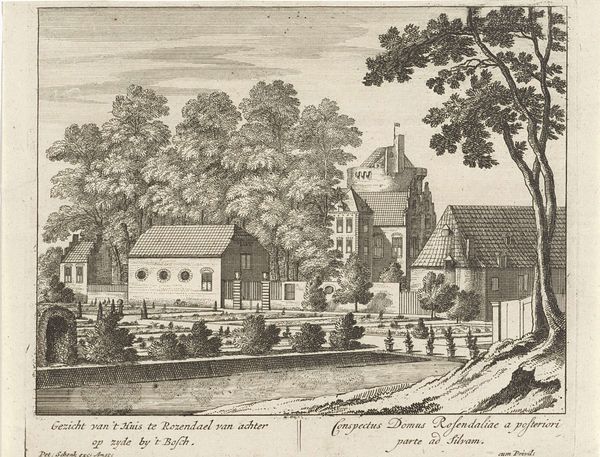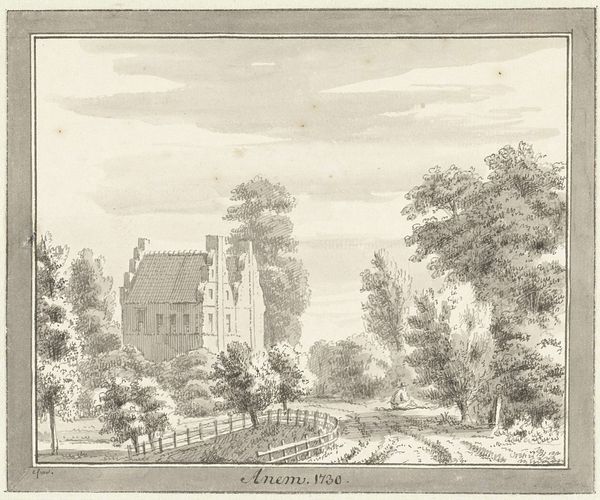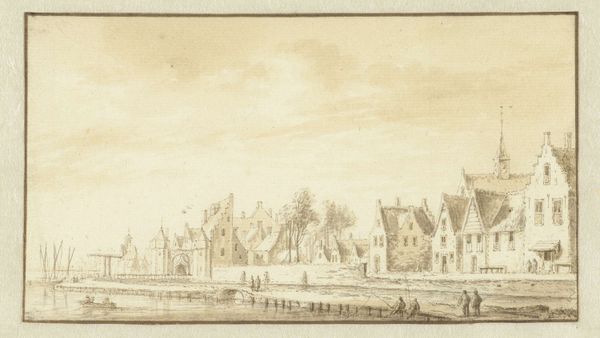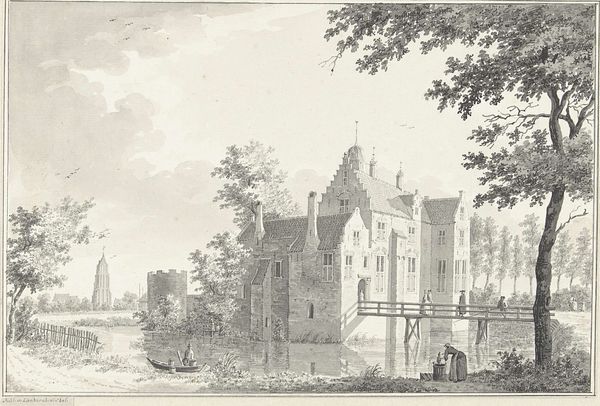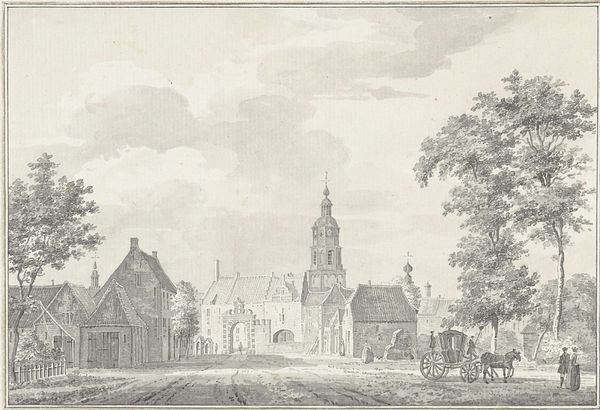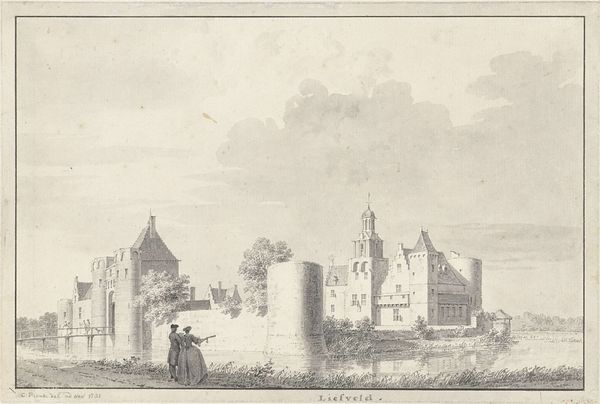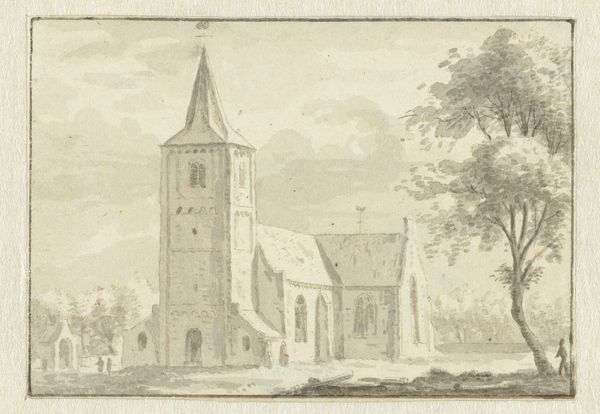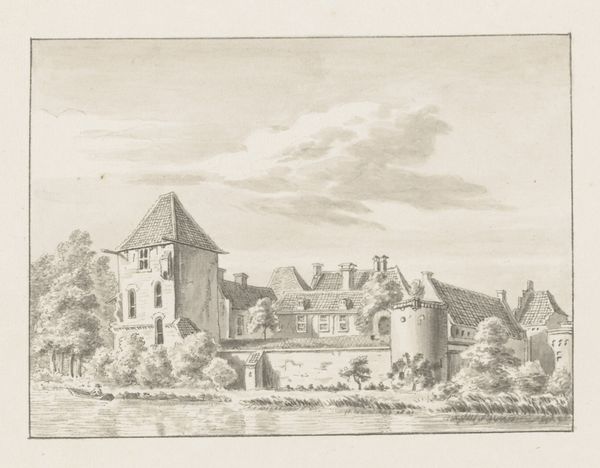
drawing, paper, ink, architecture
#
drawing
#
baroque
#
landscape
#
paper
#
ink
#
architecture
Dimensions: height 150 mm, width 207 mm
Copyright: Rijks Museum: Open Domain
Editor: Here we have Pieter Jan van Liender's drawing, "Het Huis Snavelenburg bij Maarssen," created between 1737 and 1779, using ink on paper. The building and the figures seem very formal. What’s your take on this scene? Curator: This drawing presents an idyllic image of Dutch country life, seemingly frozen in a state of peaceful bourgeois existence. But I think we need to ask: whose peace is being depicted, and at whose expense? Look at the careful rendering of the architecture versus the rather generic depiction of the people. The house represents wealth, power, rooted in land ownership. The human figures almost seem secondary to the depiction of this private property. What does this tell us about Dutch society at the time? Editor: I hadn't thought about it that way. So the drawing might be subtly reinforcing existing power structures? Curator: Exactly. Consider that this drawing was made during a time of burgeoning colonial trade for the Dutch, propping up wealth for some, like those who owned the estate depicted here. Are those resources and exploitation erased from such pastoral representations? I see this not just as a landscape, but as a cultural document, that unintentionally shows us the values of the society it reflects. Who gets to enjoy such a scene of beauty and serenity? And what mechanisms keep that tranquility in place? Editor: That’s fascinating. It really changes how I see the picture, less as a simple landscape and more as a statement, or at least a reflection, on social privilege. Curator: It also shows how crucial it is to see art within its historical and societal frameworks to really unpack and start seeing how cultural norms take hold. Editor: This conversation definitely provided a new lens to look at historical landscape art. Thanks for sharing. Curator: And thank you, these works have power but we need to start thinking of that power as a tool used by historical cultures to establish meaning in their contemporary settings.
Comments
No comments
Be the first to comment and join the conversation on the ultimate creative platform.

